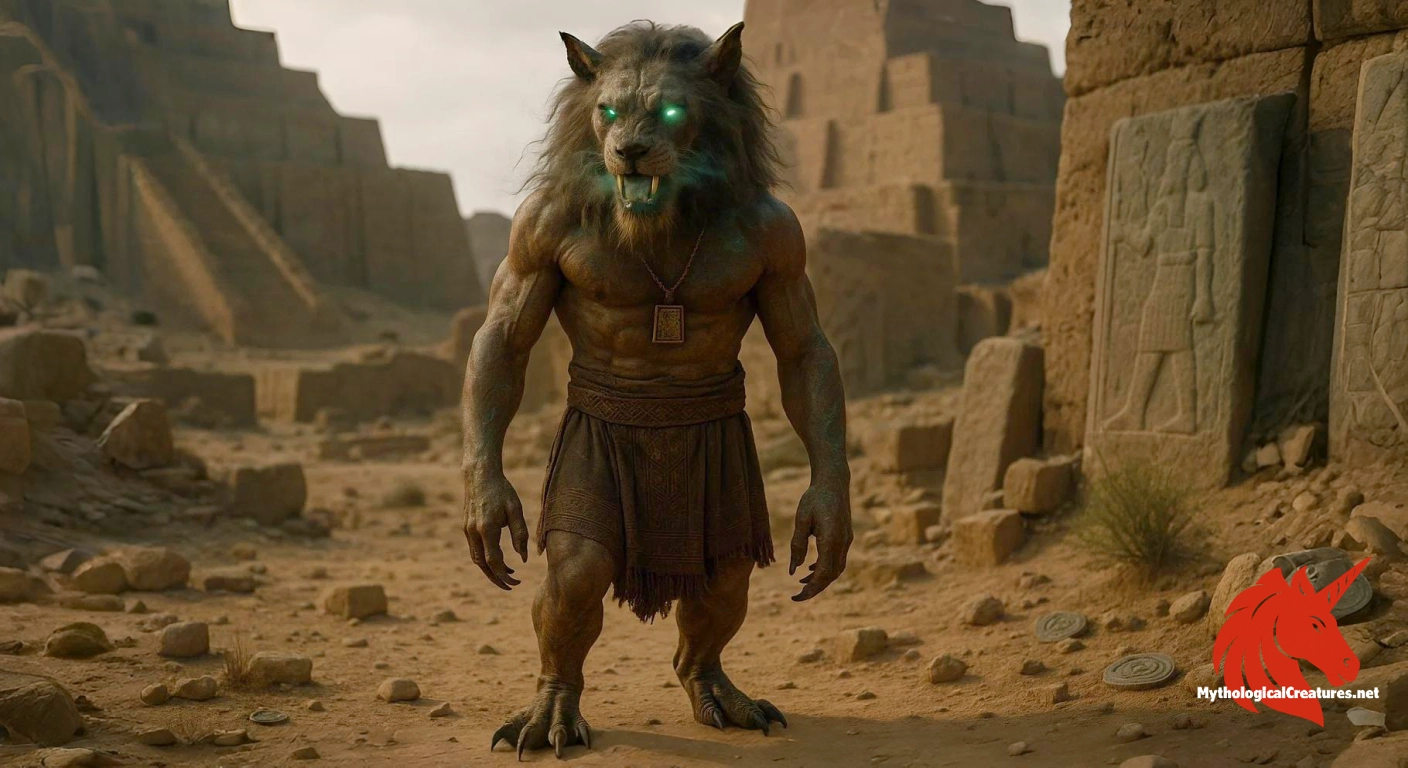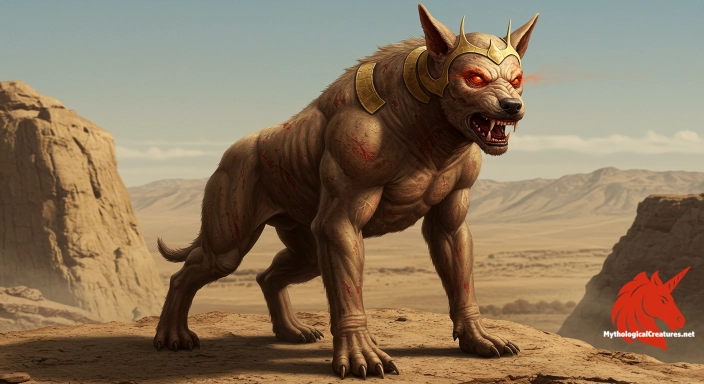Alal: The alal is a monstrous demon from Mesopotamian mythology that emerges from the Underworld to tempt humans.

Alal
Alal - Embodies the malignant force of temptation and serves as a cautionary figure in ancient Mesopotamian belief.
Origins & First Encounters
The alal emerges as a distinctive demonic figure from the rich tapestry of Mesopotamian mythology, embodying both fear and the complex interplay between the mortal and the divine. Its origins lie deep within the ancient cultural milieu of Babylonia, where the boundary between the living and the underworld was thought to be perilously thin. Over time, the alal became emblematic of the forces that tempt individuals to stray from the righteous path, appearing in myth as a tempter who crosses over from the Underworld to the realm of men. The earliest attestations of this creature blend religious symbolism with everyday concerns, reflecting the anxieties of an age where the supernatural was a constant, looming presence. As urban civilisation flourished in Mesopotamia, the figure of the alal was interwoven with rituals designed to protect against its insidious influence. Its narrative served as both a caution and an explanation for the unknown, reinforcing the importance of moral vigilance. The alal thus acted as a personification of chaos and the disruptive power of otherworldly temptations. Over the centuries, the creature maintained a firm presence in cultural rituals, symbolising the human struggle against forces beyond our control. Its lore, deeply embedded in ancient society, has resonated through time, inviting reinterpretation by successive generations.
Source Texts & Tale Variants
Ancient texts and artefacts serve as the primary witnesses to the myth of the alal, each providing unique fragments of its story. Detailed bas-reliefs in the Palace of Ashurbanipal vividly depict the creature in menacing form, ensuring that its terrifying visage endures in the visual record of history. In addition to monumental art, small bronzes and clay tablets have been found, many fashioned into the shapes of cylinders, cones, or stamps that feature the alal, highlighting its role as a subject of both reverence and fear. These tangible sources often include inscriptions and symbolic motifs that reinforce its function as a tempter emerging from the Underworld. While details in the texts sometimes vary, each version interweaves divine warnings and protective measures, such as amulets, that were believed to shield against its influence. Variants of its tale suggest that the alal not only troubled direct interactions with the mortal realm but also represented deeper cosmic imbalances. The diversity in sources underscores the creature’s multifaceted nature, from a tangible menace in public spaces to a potent symbol in private traditions. Artifacts recovered from different sites within Mesopotamia further attest to regional adaptations of its myth. These layered narratives have provided modern scholars with critical insights into the ancient mindset regarding the interplay of good and evil. They further illustrate how the creature’s legend was adapted over time to fit evolving cultural and social contexts.
Form & Powers
The alal is traditionally depicted with a strikingly hybrid anatomy that defies simple categorisation, blending human and animal characteristics in a single, unnerving form. Its torso retains a human structure, yet the head is that of a lion with open jaws that appear to be in a constant snarl, imbuing the creature with an air of ferocity. From the sides of its lion-like head protrude the ears of a dog, lending a sense of alertness to its otherwise monstrous visage. A mane reminiscent of a spirited horse cascades around its head, providing an unpredictable element to its appearance. In some depictions, the creature is further accented by features that are entirely bestial, such as eyes that glow with an otherworldly intensity and a countenance that blends beauty with terror. The feet of the alal are often represented by the taloned claws of a predatory bird, suggesting both swiftness and an avian agility that unsettle the viewer. Size variations in artistic portrayals indicate that the demon could be depicted as both towering over humans or as a more compact, yet equally formidable, presence. This complex amalgamation of anatomical parts serves to symbolise the creature’s role as a liminal being, bridging the realms of man, beast, and the supernatural. Its form is not static, however, with artists frequently adapting its features to enhance its mythic potency and to serve the symbolic needs of different eras. Each element of its anatomy contributes to an overall impression of a creature that is both attractively enigmatic and dreadfully aberrant.
Regional Faces
While the alal is rooted in the ancient traditions of Babylonia and Assyria, its representations exhibit intriguing regional variations that colour its legend. In southern Mesopotamia, the creature was often depicted with smoother, more stylised lines, reflecting a cultural emphasis on ritual purity and orderly cosmos. Northern depictions, in contrast, tend to emphasise the wild, untamed qualities of the beast, showcasing more exaggerated features and a sharper, more angular form. Certain local artistic traditions also incorporated elements from neighbouring cultures, blending indigenous iconography with the creature’s standard attributes. In these regions, the alal sometimes took on additional symbolic layers, acting not only as a tempter but also as an omen of environmental and social upheaval. Minor variations in iconography, such as the orientation of its lion’s head or the shape of its taloned feet, highlight distinct local interpretations. These subtle differences underscore the dynamic interaction between the central myth and its diverse cultural contexts. Local worship practices and ritual antidotes, including specific amulets and incantations, evolved according to the perceived threat posed by the demon in each community. Thus, while the core narrative of the alal remained recognisable across Mesopotamia, its regional manifestations offer a window into the varied ways in which ancient peoples engaged with concepts of evil and protection.
Cultural Parallels
The alal shares thematic similarities with other chthonic and liminal creatures found throughout ancient mythologies, highlighting a common human preoccupation with the unknown forces lurking between worlds. Like the Greek daimones or the later European traditions of demonic tempters, the alal stands as a representation of a boundary between the sacred and the profane. It resonates with the universal archetype of the trickster, albeit one whose tricks are dangerous seductions that test human resolve. Other Near Eastern traditions also offer parallel figures that combine animalistic features with human qualities to symbolise internal moral conflicts and external threats. Comparisons can be drawn with creatures such as the lamassu, which likewise blend human and animal elements to embody divine protection and malevolent power. Such cross-cultural connections reveal that the merging of disparate traits in mythical beings serves to articulate the unpredictable nature of the supernatural realm. The dichotomy of allure and terror present in the alal mirrors similar dualities seen in mythologies across the world. This creature’s role as both tormentor and cautionary mascot finds echoes in numerous folk traditions where physical form encapsulates abstract, often moral, ideas. Through these parallels, the alal is not only a unique product of its own culture but also part of a broader dialogue on the nature of evil in human storytelling.
Legacy & Modern Evolution
The evolution of the alal’s depiction over millennia reflects a broader shift in the way societies conceptualise evil and temptation. Early depictions in royal palaces and on utilitarian amulets gave way to abstract and symbolic representations as cultural paradigms shifted during the later periods of Mesopotamian history. Modern interpretations often recast the alal as a metaphor for internal human struggles, its hybrid form symbolising the clash between rationality and instinct. Its image has found a new audience in contemporary art and literature, where creators explore its ambivalent nature in the context of modern existential dilemmas. The demon has been reimagined in films, video games, and graphic novels, each medium drawing on its multifaceted legacy to present themes of rebellion and moral uncertainty. This enduring fascination underlines a consistent human tendency to project inner conflicts onto external, monstrous forms. In scholarly circles, the alal is examined not only as a mythic antihero but also as a cultural touchstone that has evolved in tandem with shifts in societal values. Its persistent presence in modern reinterpretations testifies to the timeless allure of myth as a means to explore the boundaries between the known and the unknown. Ultimately, the alal serves as a powerful reminder of how ancient symbols can be revitalised to speak to contemporary fears and aspirations, ensuring that the creature continues to evolve in the modern imagination.
Interesting Fact
Its theriocephalous, composite form symbolises a fusion of human and animal traits, reflecting a deep-seated cultural interpretation of demons as multifaceted manifestations of fear.
Quick Creature Info
Origin:
Our Mythic Legendary Rating:

Habitat:
Supernatural Powers:
Physical Attributes:
Abilities:
Behavior:
Lore:
References
Discover Another Mythical Legend You May Not Have Heard Of?
Uncover the mysteries of ancient folklore and expand your knowledge of legendary beings from cultures around the world.
Dare to Meet the Uridimmu....
Curated by the Mythological Creatures Team (rev. May 2025)
